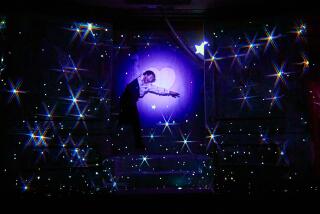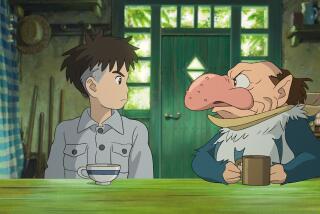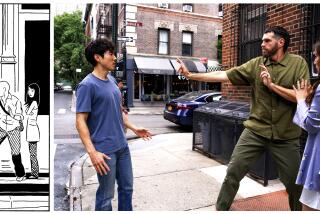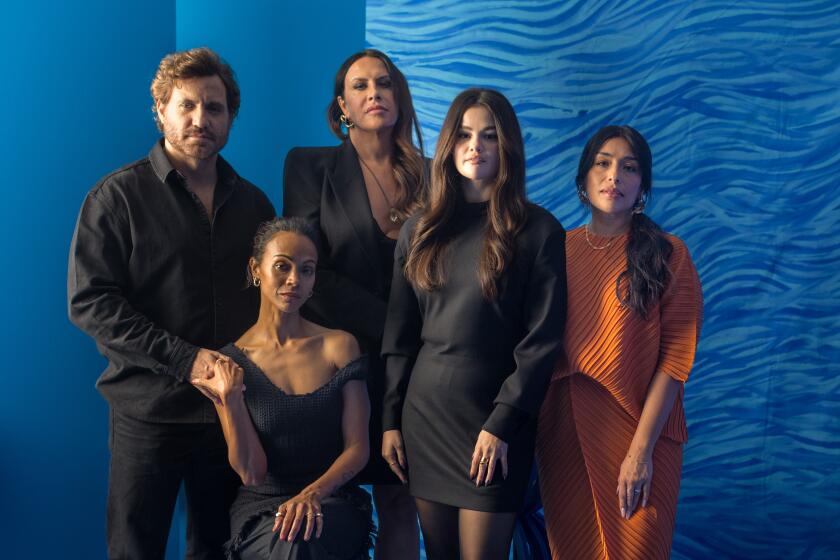‘Missing Link’ marks another phase in the evolution of stop-motion animation studio Laika
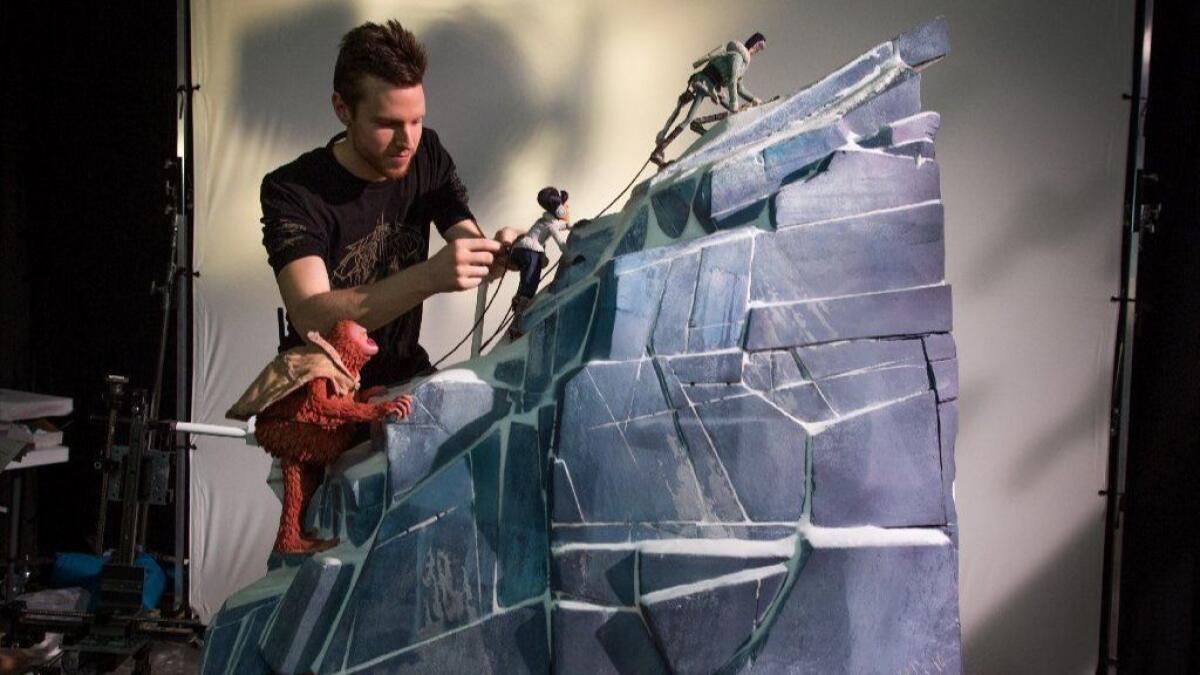
It’s not often studios have voices — perhaps Pixar and Aardman are in that small group. And so, without a doubt, is Laika. The Portland, Ore., stop-motion animation company run by Travis Knight has seen its first four features (“Coraline,” “Paranorman,” “The Boxtrolls,” “Kubo and the Two Strings”) each nominated for the animated feature Oscar. With its new “Missing Link,” Laika evolves into epic-adventure territory.
“The scope of this movie is huge,” says the film’s writer-director, Chris Butler (who also wrote and directed “Paranorman” and co-wrote “Kubo”). “Ten years ago, we wouldn’t have been able to make a stop-motion movie like this.”
In “Missing Link,” explorer and monster hunter Sir Lionel Frost (voiced by Hugh Jackman) locates a Bigfoot-like creature he dubs Mr. Link (Zach Galifianakis). Joined by the adventure-seeking Adelina Fortnight (Zoe Saldana), they embark on an odyssey to find what may be Mr. Link’s people among the Yeti in the Himalayas.
Butler says of the film’s myriad influences, “My favorite movie of all time is ‘Raiders of the Lost Ark.’ I love Ray Harryhausen creatures. I love Sherlock Holmes, so I was going to set it in Victorian times. It was taking all these things I truly loved.”
Breaking new narrative ground for the studio also required the animators to explore fresh territory, as producer and Laika’s head of production Arianne Sutner says: “We have the smallest articulated puppets we’ve ever had, and we also have the largest. Mr. Link is the largest hero puppet we’ve ever had.”
The nearly 20%-smaller puppets make the sets, already the studio’s largest, seem gigantic.
Sutner says, “In order to pull this off, we’ve explored so many different scales. We have 65 unique sets [and 110 sets overall], 95 stages. I don’t know if I should boast about that because I don’t want to shoot that way; it’s too hard.”

According to the studio, “five 3D printers often ran 24 hours a day, churning out approximately 2,000 faces per week; [they] printed over 106,000 faces in total for ‘Missing Link.’ About 39,000 were Lionel faces … the VFX Department used over a petabyte of storage — that’s a million gigabytes.”
“There’s a tendency to look at stop-motion with this nostalgic perspective: It’s a novelty that shouldn’t move anywhere,” Butler says of Laika’s continuing innovations blending old tech and new, including that extensive use of a 3D printer and visual effects. “In other media, you’re constantly pushing, striving to innovate, to find new ways of doing things. We feel stop-motion should be the same.”
To that end, while Laika’s previous films had remarkably dark edges, “Link” plays on the brightly lit end of the spectrum.
“The color palette, we really wanted to go for it, wanted to step out of the shadows,” says Sutner. “There’s real suspense and there are real stakes, but in the end, it’s lighter and brighter. We want people to leave the theater with the sense of optimism our characters have earned by the end of it.”
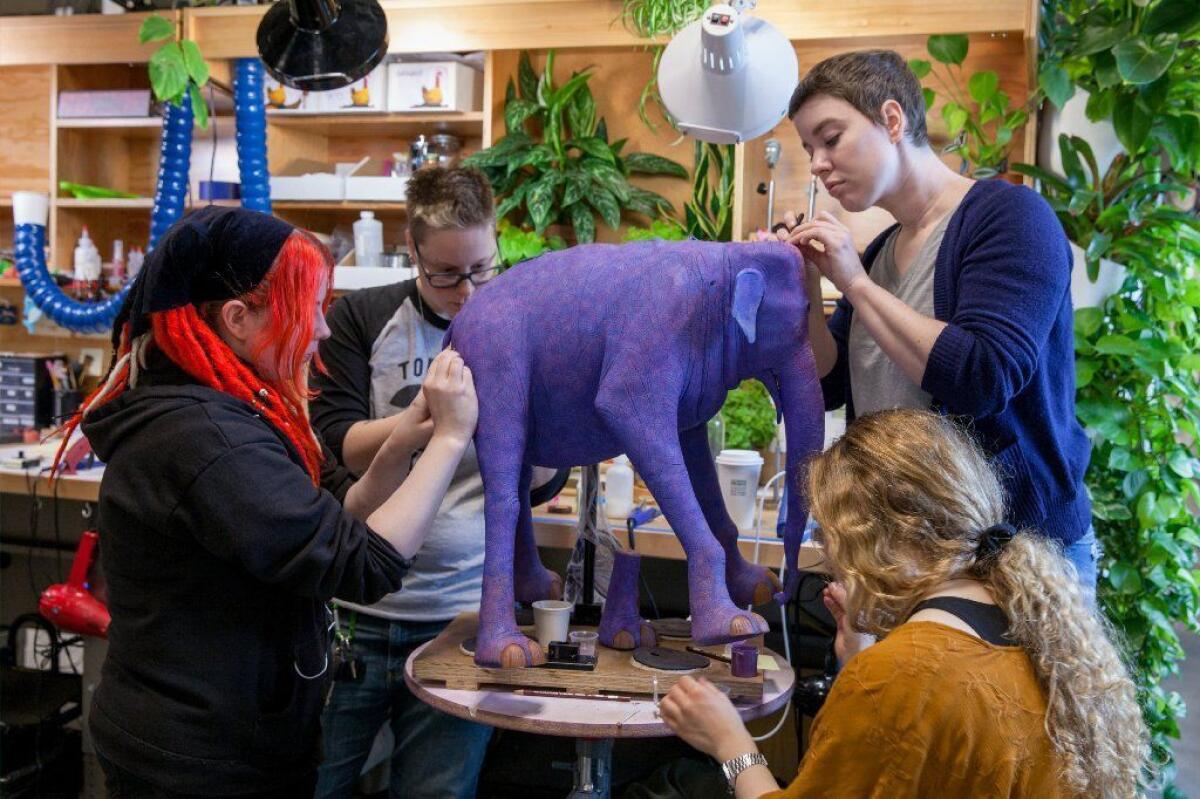
Butler says, “It’s so easy to think of stop-motion as this creepy form of animation; it’s all ghosts and spirits and goblins … People do think that. Probably because there’s been some iconic movies – ‘Coraline’ was one of them, Tim Burton, of course … but that’s not all it is.”
He says Laika wants to tell all kinds of stories, in many genres. “I don’t think our brand is ever going to be ‘The Studio That Makes Fairy Tales’ or ‘The Studio That Makes Ghost Stories.’ ”
But there is still a lovable outsider at the center of the story, and “Missing Link” finds its heart in Galifianakis’ portrayal of the sympathetic man-beast.
Mr. Link “is kind of clumsy, and there’s quite a lot of physical comedy” says Butler. “But this character has essentially been alone his whole life. If he does come across other people, they run away from him, screaming. So his concept of civilization, of society is skewed. He’s read a few things, but that doesn’t mean he’s understood them — or that he’s even read the right things.
And the actor, who has brought a skewed vision to everything from “The Hangover” comedy franchise to FX’s “Baskets” to the online series “Between Two Ferns,” locates the humanity inside his beastly role. “I think a lot of what [Galifianakis] does has this vulnerability to it,” Butler says. “This creature is the most human character in the movie. That vulnerability, that naivete, is funny, but not at the character’s expense. I saw that in Zach’s work. There is a sophistication to it.”
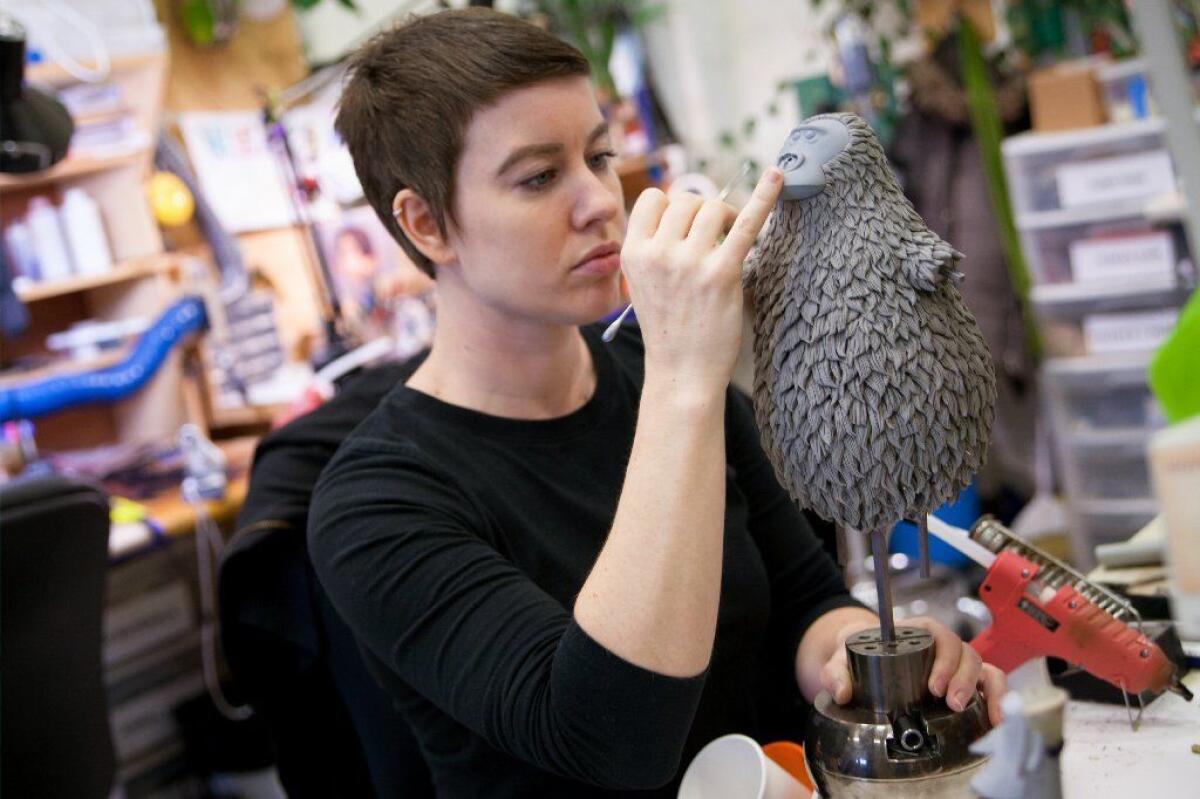
As to what will follow “Missing Link,” neither Butler nor Sutner could comment on Laika’s next project, which is in closely guarded stages of pre-production, but Butler promises it will carry a similarly unique stamp.
“I love Disney. I love Pixar. I love Aardman,” he says. “What I like is when a studio has a style that works for them, because that’s them. It’s like when people criticize Tim Burton for being too Tim Burton. Well, who else should he be?”
More to Read
Only good movies
Get the Indie Focus newsletter, Mark Olsen's weekly guide to the world of cinema.
You may occasionally receive promotional content from the Los Angeles Times.
